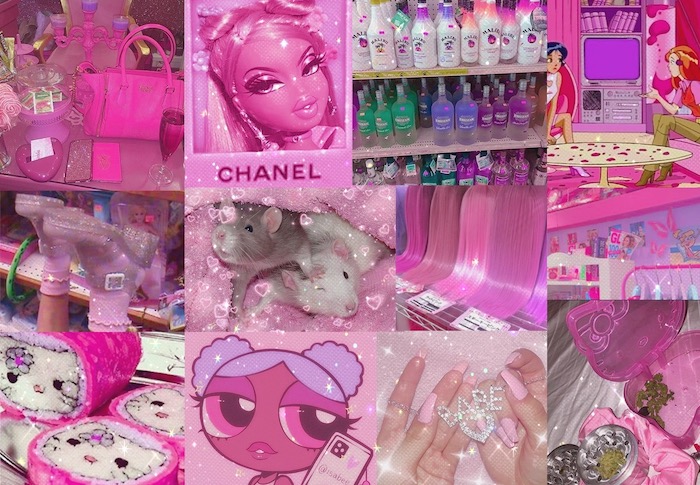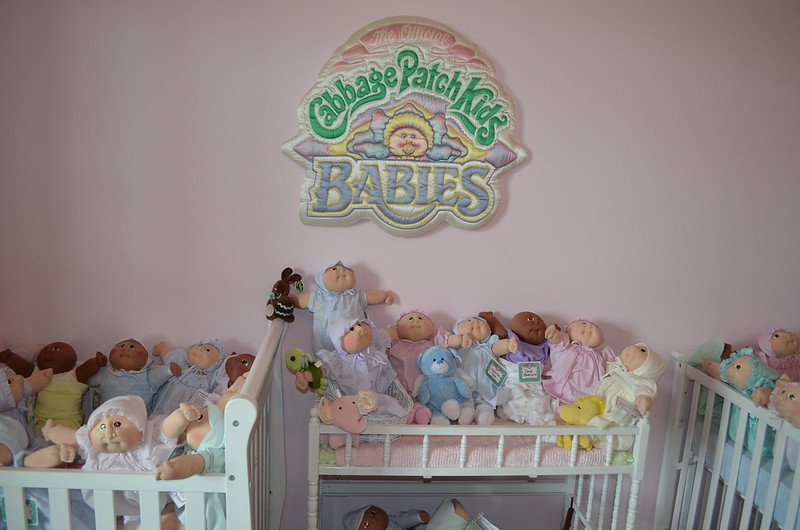
 Cabbagehead: A Timeline of Cabbage Patch Kids / A Timeline of Me
Cabbagehead: A Timeline of Cabbage Patch Kids / A Timeline of Me
Sometime before the 1970s: There are different stories about how the first Cabbage Patch Kid came to be. One of them goes this way: A kid named Xavier Roberts is playing in the woods in his home in the Appalachian Mountains of North Georgia, and he follows a creature called a BunnyBee to a magical hidden cabbage patch. He discovers Cabbage Patch Kids of all shapes and sizes, born to Mother Cabbages who’ve been fertilized with BunnyBee dust.
Sometime during the 1970s: Xavier Roberts learns the German art of soft fabric sculpting somewhere in the mountains of North Georgia and makes a doll he calls a Little Person. Eventually he renames the doll, calling it a Cabbage Patch Kid, and the doll is the ugliest thing anybody’s ever seen.
Sometime around 1976: Xavier Roberts is a 21-year-old artist studying at a missionary school when he crosses paths with Martha Nelson, an Appalachian cloth sculptor who sells figures she calls Doll Babies at local craft fairs around Kentucky. He steals Martha’s idea and makes a new soft-cloth baby doll he calls a Cabbage Patch Kid.
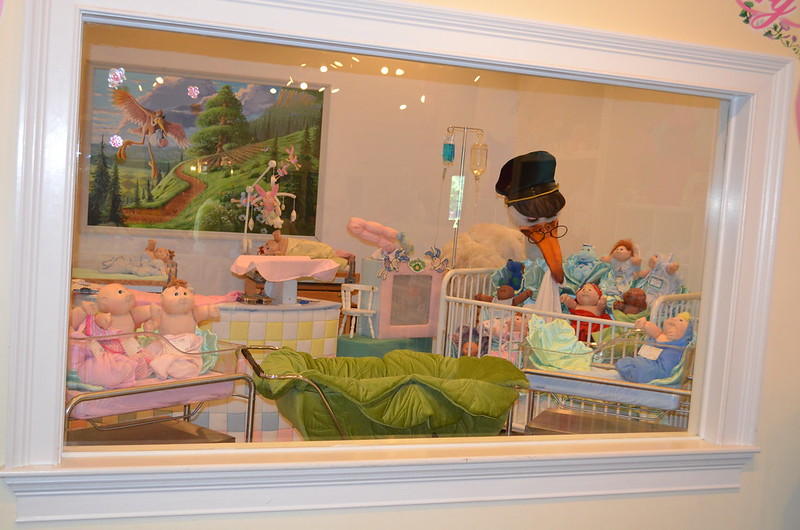
1978: Xavier Roberts looks for a space to house his Cabbage Patch Kids, which by now, he’s selling for $40 each. He gets some friends together, and they renovate the L.G. Neal Clinic, an old, shuttered doctor’s office in Cleveland, Georgia, in the Appalachian Mountain region. Xavier and his friends venture inside the clinic, where maybe they encounter dusty waiting rooms; empty, rusted syringes; and rolls of crumbling, unused bandages as they hear ghosts coughing and sneezing. They paint over everything with gleaming white paint and paste giant posters of Cabbage Patch Kids everywhere. They cover up a haunting past with an even more grotesque present, where the remnants of the L.G. Neal clinic blend with bald-headed, knotty-fisted baby dolls; polished, reflective floors; and 1980s Art Deco revival furnishings. They create a space that feels kind of like a sterile Willy Wonka’s factory — but one where they make babies instead of chocolate. Xavier names the clinic Babyland General Hospital, and kids are drawn in through its big double doors by the dozens.
Mid-1980s: From Wikipedia: “At the peak of their popularity, between 1983 and 1986, the dolls were highly sought-after toys for Christmas. Cabbage Patch riots occurred as parents literally fought to obtain the dolls for children.”
Sometime in the 1980s: My Nana buys a Cabbage Patch Kid for her youngest daughter, my Aunt Catherine. Aunt Catherine names her doll Alicia and takes Alicia everywhere. My mom says that Aunt Catherine is spoiled, and she did get a pretty expensive best-selling toy for Christmas, so maybe my mom is right. Alicia has thick cords of red yarn hair — like a Raggedy Ann doll but more bizarre-looking.
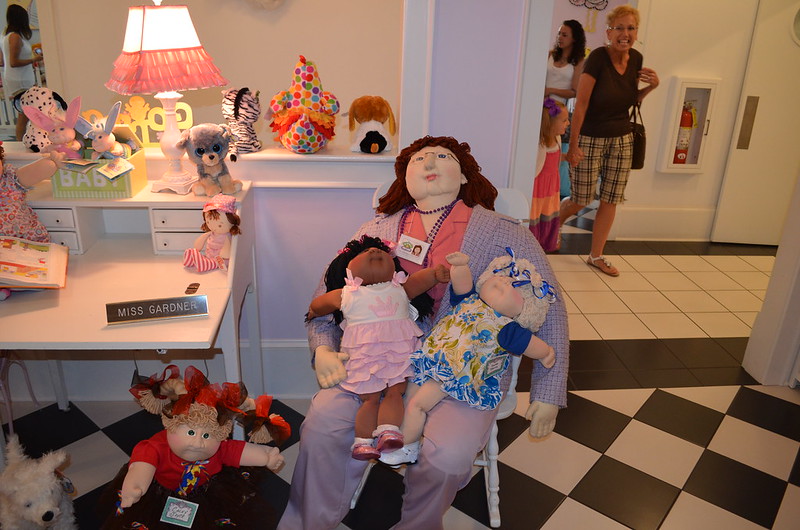
Mid-late 1980s: After exceeding half a billion dollars in sales in 1984 and 1985, Cabbage Patch Kids unexpectedly stop selling. The Kids change corporate hands several times in the coming years, appearing on best-selling toy lists in stops and starts, but they never again reach the levels of fame they attained in the early 1980s, when Nancy Reagan famously passed out the dolls to children in hospitals, and parents could buy diapers and low-sugar cereal printed with frolicking Kids.
2000: In the lobby of a Holiday Inn Express in Chattanooga, where my family is staying while my brother plays in a Fourth of July All Stars baseball tournament, I stretch open an accordion-folded brochure for Babyland General and wonder what it would be like to be a tourist in my own hometown. Cabbage Patch Kids scare me, but the brochure makes me jealous of kids my age who get to go to Babyland. I live in the shadow of the hospital but have never been inside. I see billboards for Babyland every time my family goes to play putt-putt in Helen, Georgia, a town about 20 minutes from my house that was remade in the 1960s to look like an old-world Alpine hamlet. Helen is popular with bikers (lovers of motorcycles, not bicycles) and kids who want to go tubing on the Chattahoochee, which according to Alan Jackson gets hotter than a hoochie coochie in the summer. This is when my mom likes to go to Helen to have ice cream and barbecue. She says no when I ask to go to Babyland General, which lurks nearby downtown Helen. My mom says that Babyland General is weird, is for “mountain people”, even though our family has lived in the Southern Appalachians for four centuries, and isn’t that what we are?
2002: I’m at Nana’s house, staring into Alicia’s round, dead eyes. This doll has haunted me for my entire childhood, with her nonexistent mouth and her gnarled fists and toes and the Xavier Roberts signature that’s scrawled across her butt cheek like a trashy tattoo. I have tried to make Alicia prettier, painting her fingernails and toenails with Nana’s magenta Revlon nail polish and attempting to flesh out her tightly pressed lips with a red Magic Marker. I force Alicia’s soft cloth body into an upright sitting position beside my Bitty Baby doll and think how much prettier Bitty Baby is. I’m six years old, and I kind of look like Alicia myself with my chubby cheeks that my parents always squeeze.
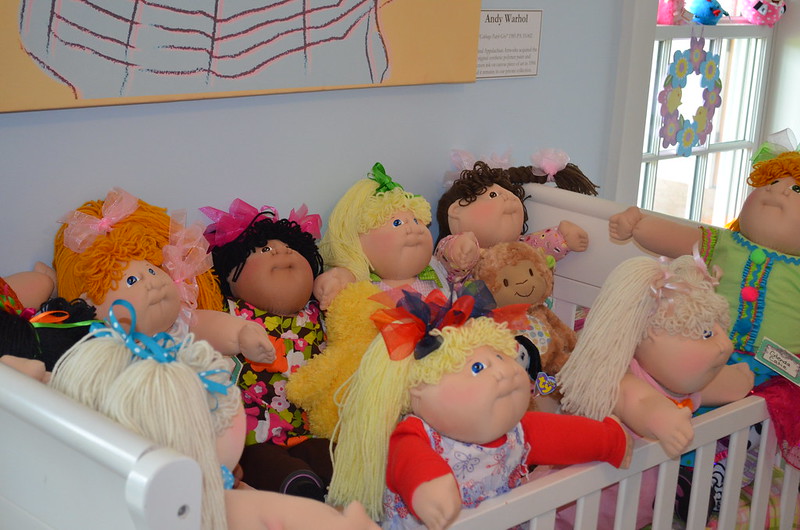
2005: The stories told at Babyland General about Mother Cabbage and Cabbage Patch Kid birth pull equally from medicine and folklore. The Cabbage Patch lore references the pain of human labor and delivery, as well as old legends of babies popping out of cabbages, the sorts of stories parents tell their kids to avoid the sex talk. When I’m nine, I learn about sex from my dad, who’s a plumber. He says he’s got to fix our sink with a male and a female pipe fitting, and I ask why he calls the pipe fittings male and female and “….well…you know….cuz the male piece of pipe goes inside the female” and he realizes I didn’t know till he said it just then.
2009: My friend Elizabeth and I discover Weird Al on YouTube, and I get in trouble for blaspheming when Aunt Catherine’s ancient Cabbage Patch doll Alicia stars in my Weird Al-inspired remake of the music video for Carrie Underwood’s “Jesus, Take the Wheel”. In my version of the video, Elizabeth wears a pillow under a big T-shirt so she looks like she has really big boobs, and Elizabeth and Alicia roll down the hill together in front of Nana’s house during the climax of the song with me running through the long grass behind them, trying to keep the camcorder from shaking. I think the video is really funny, and my dad thinks it’s disrespectful to God and takes away my camera.
2010: Babyland General Hospital leaves its original facility and moves to another space in Cleveland, a 70,000-square-foot compound with white columns. The company embeds big, white concrete sculptures of giant Cabbage Patch heads into the wide expanse of grass that stretches out in front of the hospital. Driving by these big heads at night on the dark, curvy mountain road without any streetlights, with the moonlight bouncing off the Cabbage Patch heads and causing their huge noses and ears to glow in the moonlight, is one of the creepiest sights to see in this part of North Georgia.
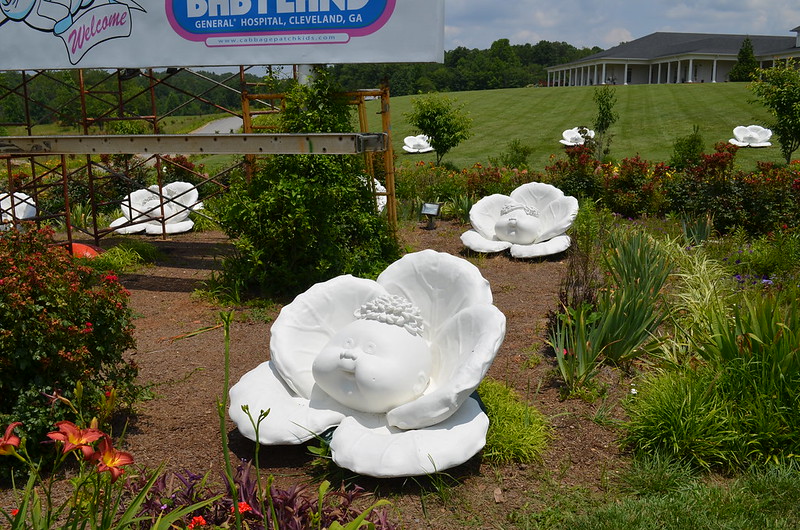
2015: At college, I go out with a boy who says my hometown is “cousin-fucking country”. Later on, in bed, I should tell him to stop — “you’re not my cousin!” — but I don’t, because I always think of comebacks after the fact. Now that I’m away from it, the place I’m from sometimes seems embarrassing, and I don’t know how to explain it without laughing at it. I take to embracing the camp and the spectacle of my hometown, my upbringing, my Appalachian-ness. When people ask about my childhood, I tell them anecdotes that are true but seem like they’ve been lifted from episodes of The Dukes of Hazzard: “My great-grandpa hid mason jars of homemade moonshine around the house.” “Our town’s city hall is also a NASCAR museum and a moonshine still.” “I grew up right by the Cabbage Patch Kid headquarters of the world.”
2018: In 2018, Cabbage Patch celebrates 40 years of adoptions in North Georgia. I take a date to Babyland General Hospital, mostly as a joke, and I wonder if I’m making a mistake and this will scare him off. While we’re at Babyland, the two of us kiss and act cute and annoying. There are kids climbing all over the props that house dozens and dozens of Kids — the fire truck and the school bus and the rows of baby cribs. My date and I peer through the darkened windows of a lavish Cabbage Patch Kids-themed ballroom with checkered, glossy floors and walk through a garden out back filled with mostly-dead cabbage plants, morning glories, pole beans. “What the fuck!” We keep saying it.
2020: I go to Appalachian tourist traps like Babyland when I’m home visiting my family. I’ve left Appalachia, and now I’m a mountain tourist like all the leaf-lookers my dad used to make fun of when I was a kid. Some people talk about an Appalachian diaspora and say that young people leave Appalachia because there aren’t any jobs, because there isn’t any infrastructure. I left Appalachia to go to college, and I haven’t been back. I miss it and I don’t. Like most attractions I visit in Appalachia when I’m back there, like Dollywood and Gatlinburg and the alpine town of Helen, where my mom still likes to go play putt-putt and get ice cream, Babyland General feels frozen in the past.
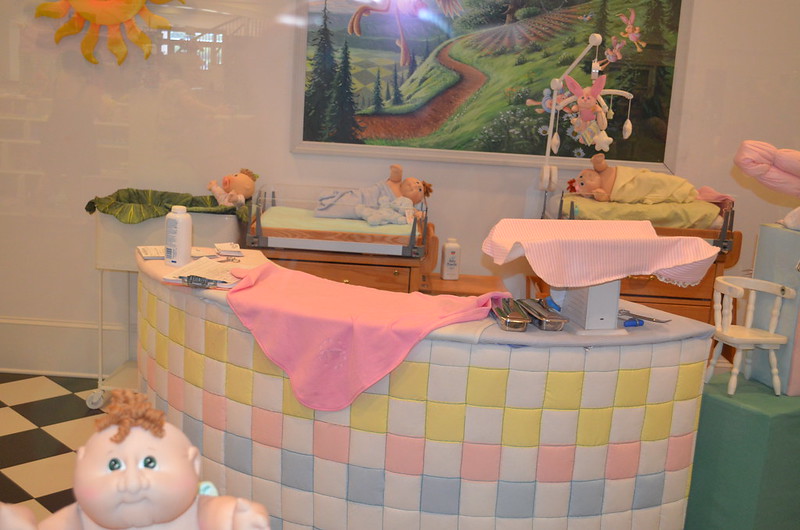
Visiting the hospital is an exercise in nostalgia, like listening to George Jones or eating a two-flavor Trix yogurt. The hospital still operates, the spotlights on the big Cabbage Patch heads on its lawn are nauseatingly bright, and the nurses perform their deliveries with more energy than ever, slapping the newborn Kids’ butts with an uncomfortable verve. But who buys Cabbage Patch Kids anymore? Who are all these tourists, and why are they here? Why am I here?
2022: I order a gallon-sized Ziploc bag filled with Cabbage Patch Kid action figures from the 1980s on eBay. The bag stays on my desk, and I take the Kids out of it sometimes; their faces are all grimy, which makes them look like tiny coal miners. When I dump out the bag of Kids and run my fingers over their chunky yarn hair and swollen little cheeks, I think that these are faces only a mother could love. And I do love these faces, so maybe that makes me their mother.
Yesterday, today, tomorrow: At Babyland General Hospital around maybe noon, maybe 1 p.m., maybe 4 p.m., a Cabbage Patch Kid emerges from a cabbage so big and so dilated that an adult could fall into it. Mother Cabbage’s purply-green leaves coalesce in a yonic formation and look to be made of the same fabric as the Kids’ soft doll bodies. A (fake) nurse comes over the intercom to announce the birth of a new Kid and offer it up for adoption. A crowd of kids and parents in NASCAR T-shirts shout name suggestions at the nurse and end up naming the Kid Bobby, and for $50, you can take Bobby home.
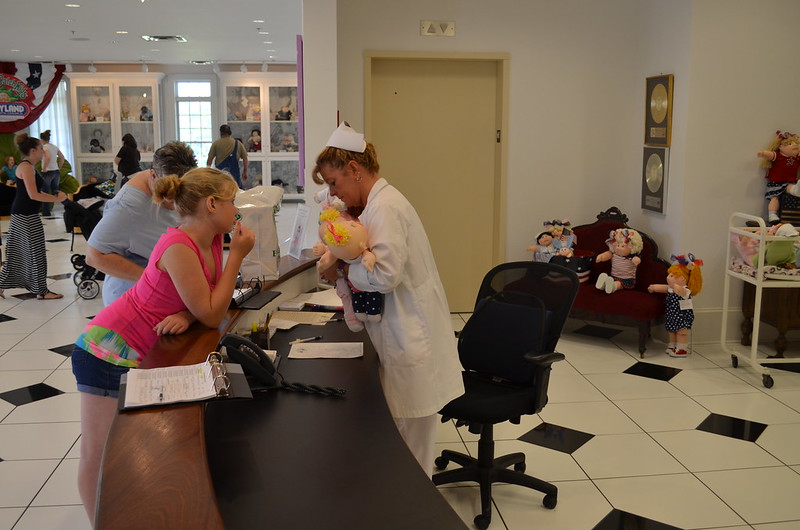

Rachel Pittman is a grad student who studies videotape and 1980s moving image media. Her creative nonfiction has been published by Bitter Southerner and Avidly, and is forthcoming in the Carolina Quarterly. She’s on Twitter as @mtvscum.
Photo credits: Thank you to William McKeehan for all of the above (perfect, if we do say so ourselves) photos, found using Creative Commons and licensed under CC BY-SA 2.0.
Categorised in: Features, Suburban Feelings
